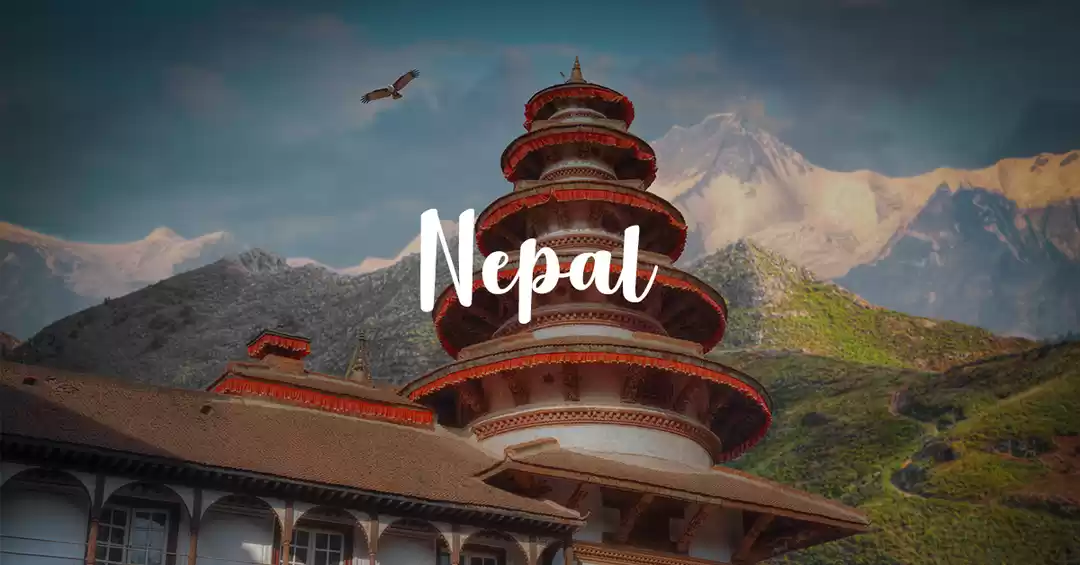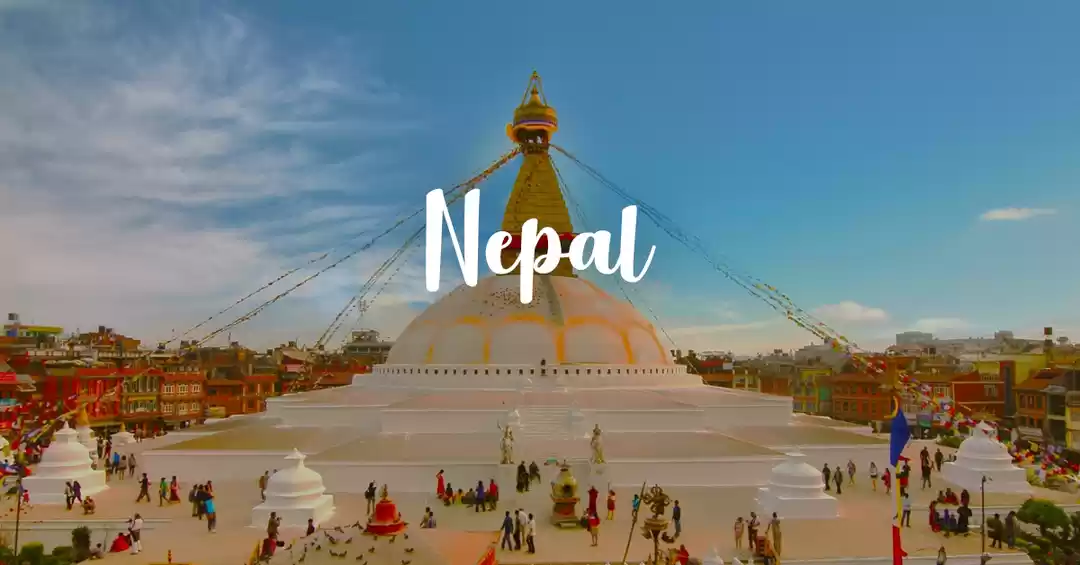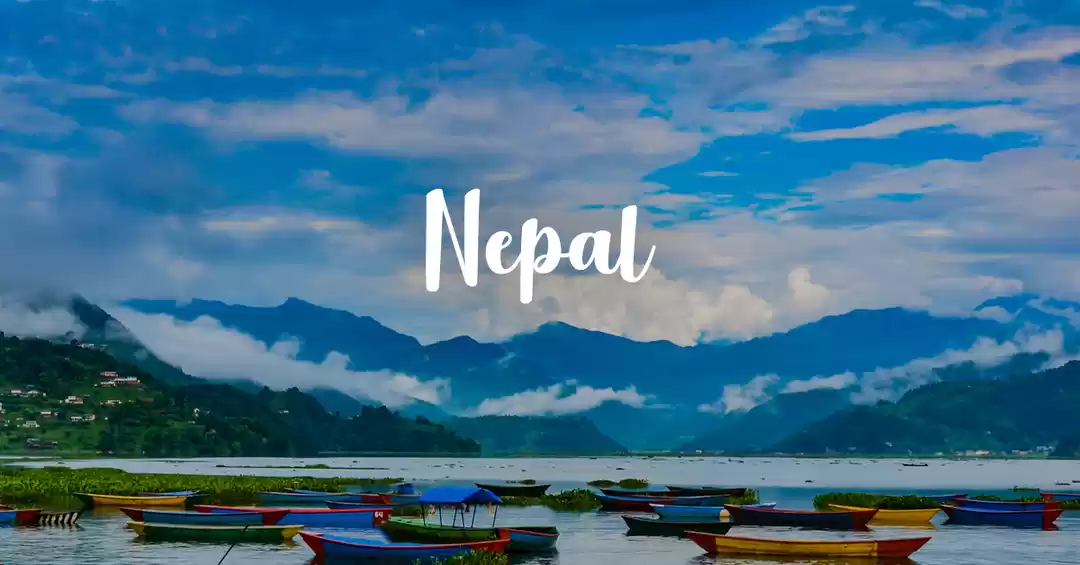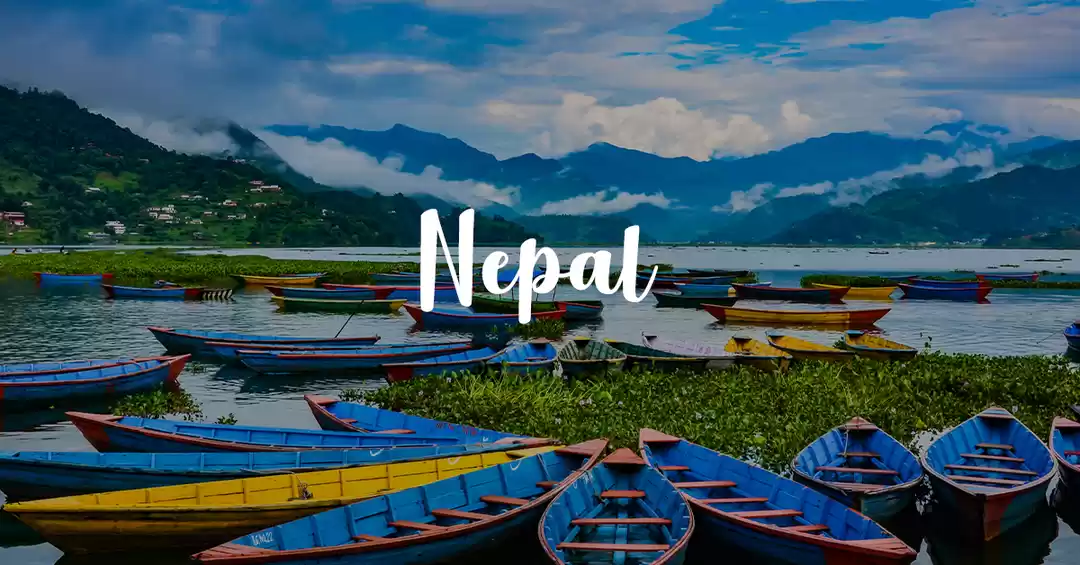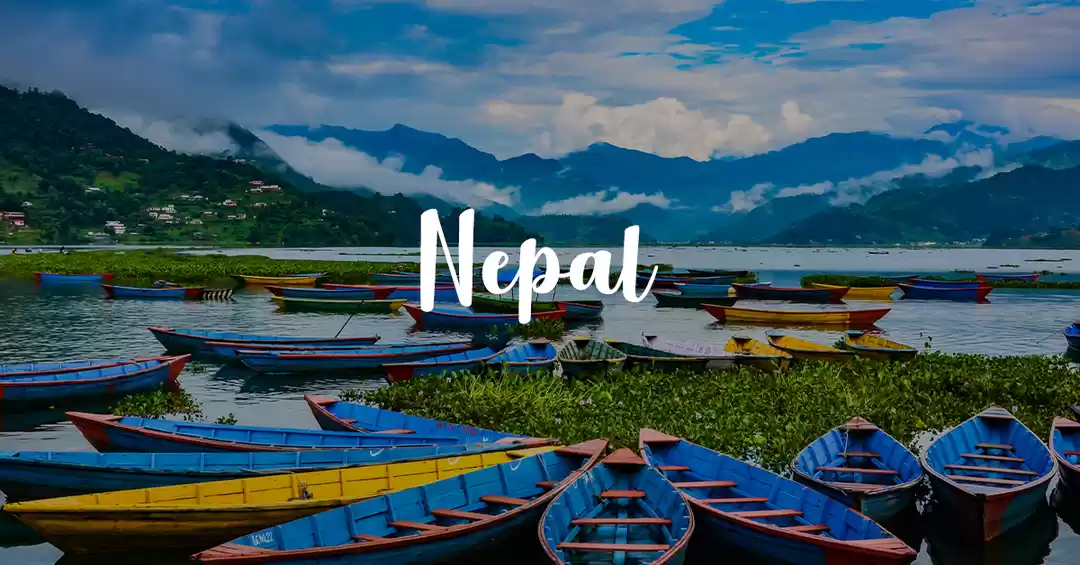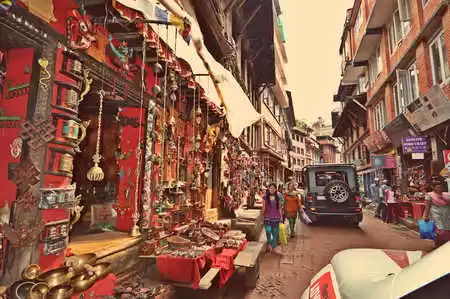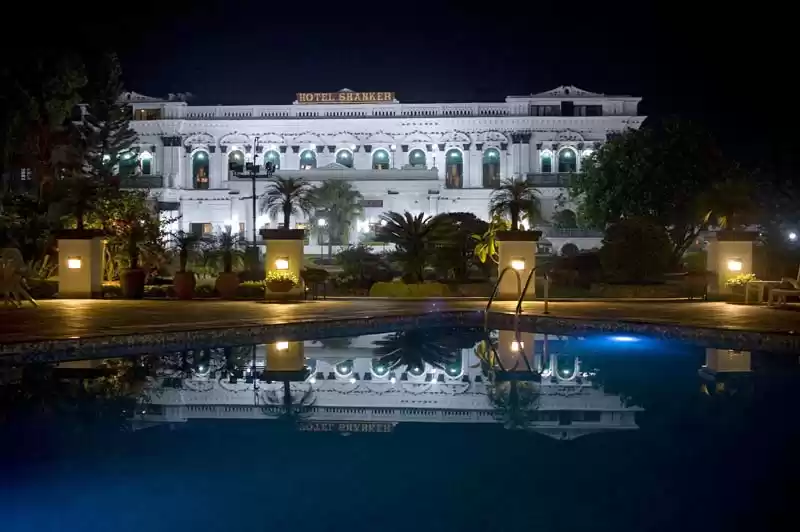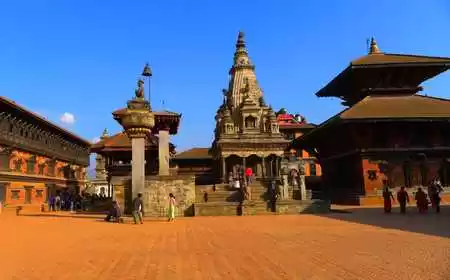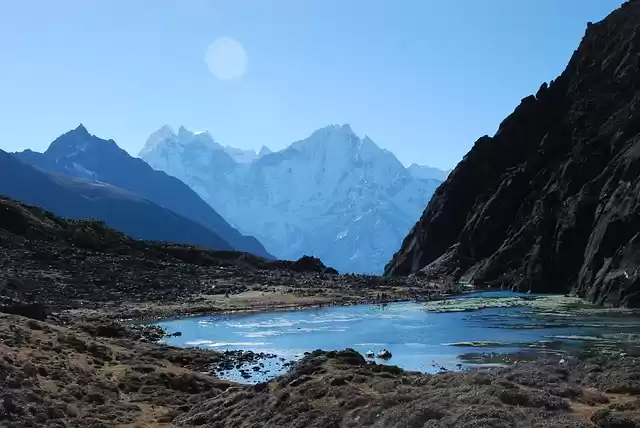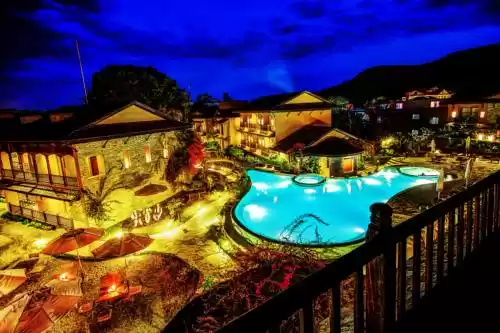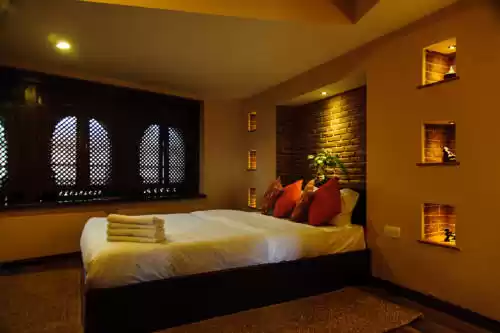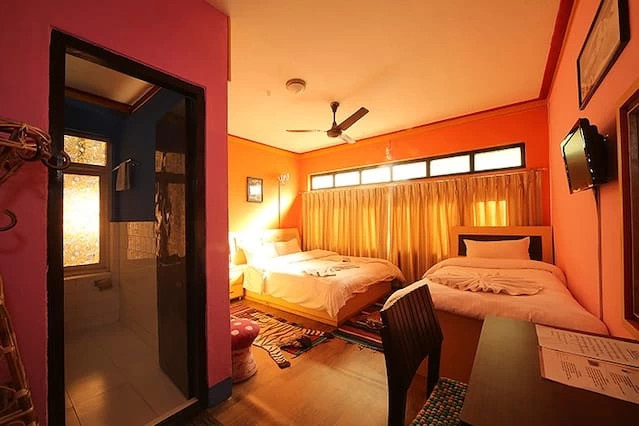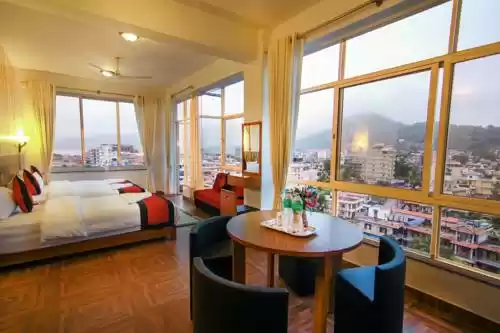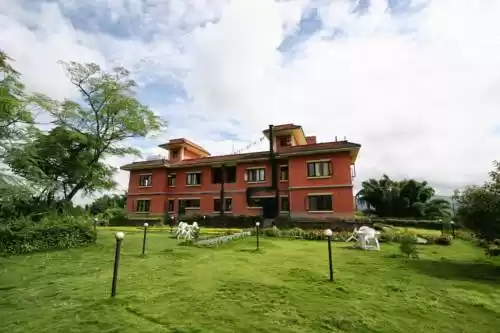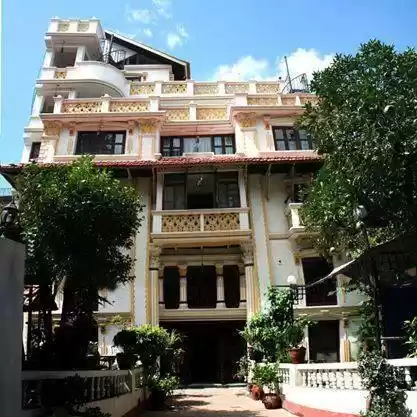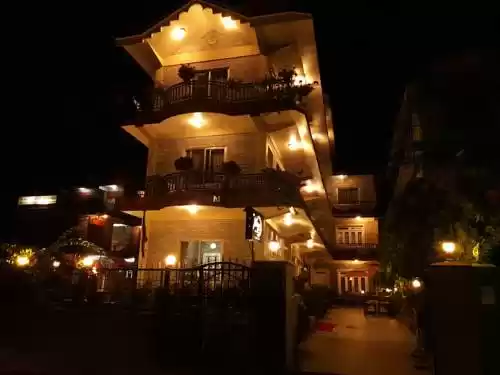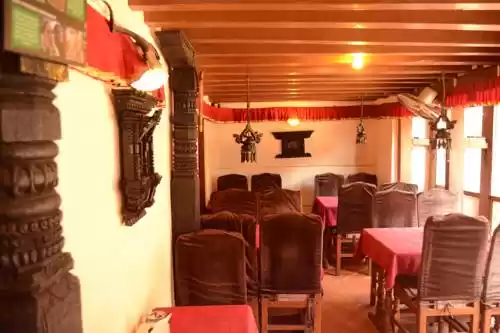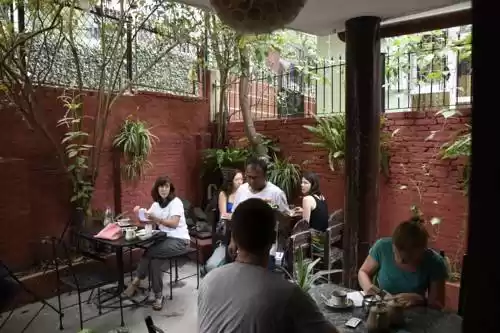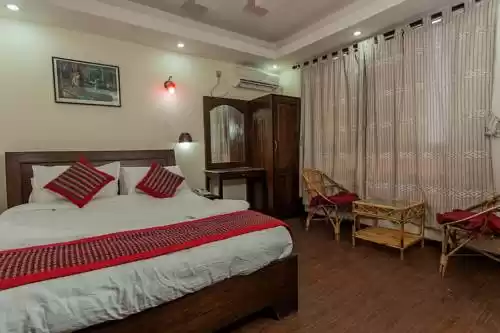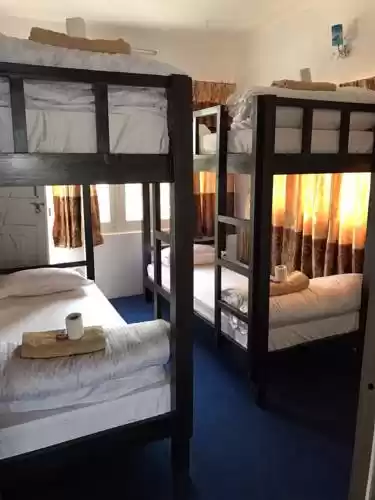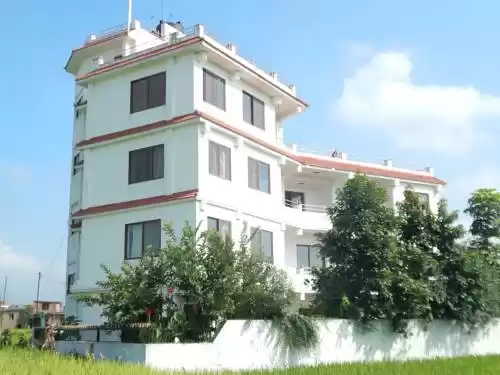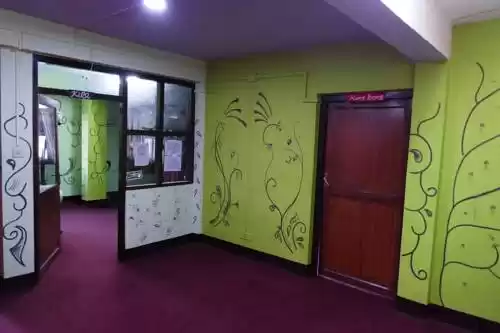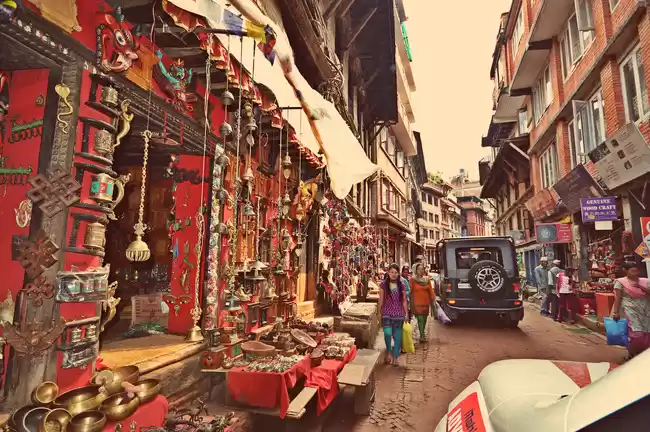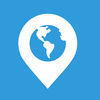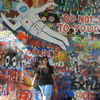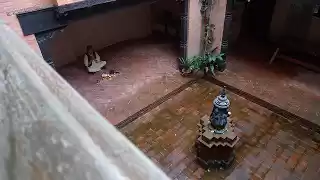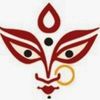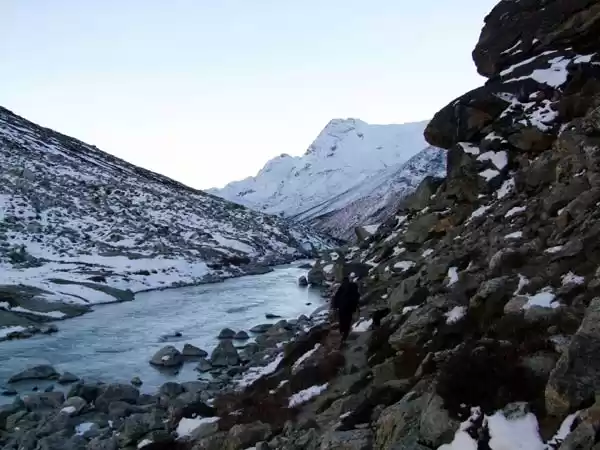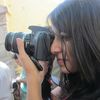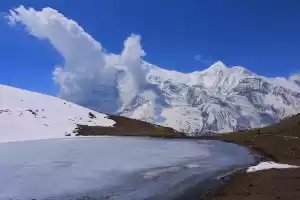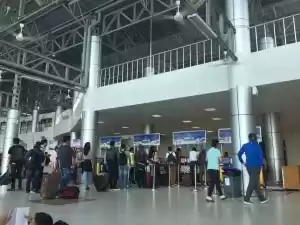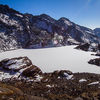Nepal Tourism and Travel Guide
Explore Packages
Tripoto Recommends: Nepal
Top Attractions In Nepal
Itineraries For Nepal
Best Luxury Hotels in Nepal
Live like the royal family of Nepal sipping premium whiskey and indulging in local delicacies at these high-end hotels cherry-picked by Tripoto
Best Mid-Range Hotels in Nepal
Comfortable stays, good food and Himalayan vistas, Tripoto's list of the best mid-range hotels will let you feel the happy vibes of Nepal without having to spend a fortune
Best Budget Hotels in Nepal
Nepal has plenty of budget options in nice locations with stunning views and good food. Find one from Tripoto's list of the best budget hotels in Nepal
Best Hostels & Homestays In Nepal
Homestays are the perfect way to gain insight into the unique Nepalese culture and lifestyle. Or, you can stay at these happening hostels with happening crowds.
Travel Videos For Nepal
Best Time To Visit Nepal
Nepal tourism welcomes travellers all year round but the best time to travel there is during autumn that lasts from late September to late November. In these months the weather is not as cold at higher altitudes nor is it too hot in the lowlands. The weather is clear and dry which helps tourists make the best of Nepal tourism. The temperature ranges from 10 to 25 degrees Celsius. The surroundings feel clean and pleasant after the terrain is washed by rains during monsoon. Besides, if you are going for a trek, this is the most popular time for that. After autumn, travellers prefer visiting Nepal during spring, which lasts from March to May. The weather is warm during the day but can get chilly at night, so it is recommended to carry clothes ideal for both. Spring is a good time to go for treks as well, with nature in full bloom. It should be noted that one of the top festivals under Nepal tourism is the traditional new year festival called Bisket Jatra Navavarsha, celebrated with pomp and frills in Bhaktapur in April. You should plan your trip accordingly to be able to attend it if you are planning a Nepal tourism trip in the spring. Towards the end of May, you might see a bit of mizzling. From June to mid-September, the weather is hot and wet, hence not recommended for Nepal tourism. Besides the heat, the lowlands get dusty. Due to the danger of landslides owing to the consistent rainfall, you should avoid going trekking in Nepal in this season as well. If you do choose to come here in these months, the perk is that you get a crowd-free experience of Nepal tourism. The same applies for the winter months, that last from December to February. These months are characterised by a biting cold, accompanied by heavy fog, which does not bode well for Nepal tourism. Only the adventurous who want to experience the Himalayas at its harshest choose to trek in this weather.
Visa Information For Nepal
India is the only country in the world whose citizens do not require a visa for Nepal tourism! Even if that was not the case, it is fairly easy to get a visa for Nepal tourism. Most countries are eligible for getting a visa on arrival. Nevertheless, exploring Nepal tourism is extremely easy for Indians, thanks to the 1950 Indo-Nepal Treaty of Peace and Friendship. In fact, it even allows them to stay in the country as citizens for as long as they want, with no restrictions. Certain documents are still required for Indian citizens to cross the border. Any of the following can be used as valid identification.
- Your Indian passport
- Your Voter ID card with your photograph
- A registration certificate issued by the Embassy of India in Nepal. This is for you if you are an Indian citizen who is residing in Nepal
- A temporary identity card issued by the Embassy of India in Nepal. This is for an Indian citizen in case of an emergency.
If you have the necessary documents, you will face no trouble at all to find your way through Nepal tourism.
Best Places To Visit In Nepal
Nepal tourism wraps up polar opposites into one experience, and travellers from all parts of the world enjoy every minute of their time in the country. Whether you choose to delve into the adventures of the Himalayas, embark on a pilgrimage to the Buddha’s birthplace or do both, the places to visit in Nepal tourism are surreal and extraordinary. Gorgeous landscapes and an inherent peace hanging in the air guarantee that you will end your holiday on a stress-free note. This Nepal travel guide has listed some of the high-ranking Nepal tourist attractions – add whatever suits your preferences to your checklist!
Kathmandu
The capital of the country, also its only metropolitan, is where travellers get acquainted with Nepal tourism. A site of serenity as well as adventure, Kathmandu offers you the best of both worlds. Situated at a height of 4600 feet, this city serves as the base for most people going on treks. Therefore, there is not a dearth of shops for equipment for adventure sports. You will also not run out of spiritual sites to visit as many of the famous monasteries and temples worth adding to your Nepal tourism itinerary are situated here. While walking around Kathmandu’s medieval city squares, you will be stunned by the fabulous palaces, temples, stupas and shrines. Kathmandu is a popular place part of Nepal tourism not only owing to its accessibility but also its pleasant weather and natural beauty that can be experienced all year. The local handiwork is well known all over the world so you must remember to add shopping at Thamel or even the malls in your Nepal tourism itinerary.
Pokhara
Pokhara is the second-largest city within Nepal tourism. The highlight of any Nepal travel guide, Pokhara is known as Nepal tourism’s capital since it attracts so many travellers. Unanimously considered as the best spot in the city is Phewa Lake, mirroring the hills that border the city. You will always see a number of colourful boats rowing across the water body. Some of the best restaurants, cafes and shops in the city are lined up along the lake and add to the postcard-perfect scenery. The area surrounding Phewa Lake is where most photographers head to. On the other side of the lake is the old town, which is famous for its wooden items and handicrafts. The Tibetan Mini Market located in the old town is also a great place to buy souvenirs. Besides the general merriment that the city offers, many travellers rank it high under Nepal tourism as many treks in the Annapurna range begin from here. Adventure sports like paragliding and river rafting can also be done here.
Bhaktapur
An excellent addition to Nepal tourism, Bhaktapur is an integral historical and spiritual city in the country. It is located about 13 kilometres away from Kathmandu, hence it does not require much of a detour to make it to your Nepal tourism itinerary. Bhaktapur is segmented into three areas, each consisting of a plethora of temples and other religious places. The Himalayas surround the city and demand your attention every time you are exploring the place. The beautiful medieval city unfortunately faced mass destruction in the earthquakes of 2015 but it is slowly but steadily rising up again. As it is the third-largest city in the country and has some historical eminence attached, Bhaktapur is undoubtedly among the most visited places under Nepal tourism. However, entry to the city is not free. You need to pay about Rs.940 to enter the city and enjoy it. This money collected from travellers is utilised for Nepal tourism as it is used for the maintenance of temples.
Nagarkot
At the edge of the Kathmandu Valley and enclosed by the Himalayas, Nagarkot is a quaint village that offers a dream-like view of the towering mountains. It is possible to spot almost all of the Himalayan ranges in Nepal, namely the Annapurna, Manaslu, Langtang, Jugal, Everest, Numbur, Ganesh Himal and the Rolwaling ranges. To enjoy the sweeping view of the Himalayas, you only have to travel 28 kilometres from Kathmandu to reach this village. It rests at a whopping altitude of 7000 feet and used to be the preferred place for a summer retreat for the royalty of Nepal as well as neighbouring countries. In the last few years, Nepal tourism has observed a hike in demand for Nagarkot. The only thing travellers do here is allow themselves to be deeply immersed in nature.
Sagarmatha National Park
A UNESCO World Heritage Site, this national park is famed around the world as one of the best wildlife reserves. What makes it stand out is its awe-inspiring location with the towering Mount Everest in the backdrop along with several other valleys and glaciers. Apart from Mount Everest, other important peaks you can spot are Lhotse, Cho Oyu, Pumori, Ama Dablam, Thamserku, Kwangde, Kangtaiga and Gyachyung Kang. This place is not only known to harbour some vulnerable species of animals such as snow leopards and red pandas but it is also recognised as a prominent bird sanctuary. People who want to observe a variety of avifauna do not leave this national park disappointed. Sagarmatha National Park’s trekking and hiking trails as well as mountaineering opportunities invite throngs of travellers from different countries and have been since the 1960s. If you want to experience the best of nature and the Himalayas that Nepal tourism has to offer, Sagarmatha National Park is an unmissable destination for you.
Patan
Among the biggest cities in the country, Patan or what is now known as Lalitpur, is not very far from Kathmandu. It is located across the Bagmati River. The city’s cultural centre is Durbar Square, a plaza adorned with statues. It is where the temples and palaces are situated too. Here, you can also visit the Patan Museum which is one of the top places to visit in Nepal. This is where traditional handicrafts are put on display and some of them are also available on purchase. Upon reading a Nepal travel guide, you will find out that this place was important in the history of Nepal as it was the seat of the Newar kingdom for years. A notable characteristic of the city is the harmonious coexistence of Hinduism and Buddhism. This spirituality is woven into the air in Patan, immediately imposing a relaxing vibe on visitors as they make a stop in this city on their journey of Nepal tourism.
Lumbini
Lumbini is an eminent holy place in Nepal tourism as it is the birthplace of Lord Buddha. He was born in the gardens of the city which is why this has become a prominent pilgrimage for those who follow the Buddhist faith. Home to a number of stupas dating back to thousands of years ago and several monasteries built by various dynasties, Lumbini is recognised as a UNESCO World Heritage Site. One of these structures is the pillar put up by Emperor Ashoka when he was here on his pilgrimage. To this date, people from all over the world opt for Nepal tourism mainly to visit the Buddha’s birthplace and to go through the scriptures and learn more about Buddhism. The atmosphere is distinctively tranquil, perfect to spend a few days exploring your inner peace. Among places to see are the notable monasteries, adorned by numerous waving prayer flags left by visitors. The most significant and sacred place to visit in Lumbini is the Mayadevi Temple as it is the site where Queen Mayadevi gave birth to the Buddha. Not far from there is the Bodhi Tree. It is believed that Queen Mayadevi rested here before the birth of the Buddha. It is decked with prayer flags and stands out as a focal point of Nepal tourism. Another holy place to see inside the garden is the Pushkarini Pond, where the Buddha used to swim when he was a young prince. Several archaeological artefacts are placed within the temple as well. For a complete experience of Lumbini and Nepal tourism, you can participate in the Lumbini circuit tour which takes you along 64 archaeological and historical sites. You can also stop at the nearby villages to interact with the locals and get to know more about their culture and lifestyle.
Where To Stay In Nepal
You can easily find a place to stay in Nepal. However, be aware that only popular tourist destinations will offer a variety of accommodations. Your budget for the stay depends on when and where you are staying. If you choose to travel in the off-season, your accommodation expenses can be reduced by half due to discounts. Nepal tourism can be enjoyed on a very low budget by staying at lodges or hostels. A lavish trip would entail staying at resorts that can cost you Rs.25,000 or more. Most people prefer staying at guesthouses though, which are comfortable for a mid-range stay. While there are luxurious options in the country, generally hotels here are simple so you should not be expecting a surplus of amenities. Putting up at homestays is an interesting way to spend your time in the country too. This Nepal travel guide has listed a few hotels that you can consider staying at during your Nepal tourism sojourn.
Budget hotels under Nepal tourism
- Hotel Holy Lodge, Kathmandu
- Kathmandu Eco Hotel, Kathmandu
- Khumbu Lodge, Lukla
- Backyard Hotel, Kathmandu
- Hotel Heranya, Kathmandu
Mid-range hotels under Nepal tourism
- Nepal Pavilion Inn, Kathmandu
- Kathmandu Guest House, Kathmandu
- Dalai-La Boutique Hotel, Kathmandu
- Avataar Kathmandu Hotel, Kathmandu
- Kantipur Temple House, Kathmandu
Luxury hotels under Nepal tourism
- Dwarika’s Hotel, Kathmandu
- Yeti Mountain Lodge, Lukla
- Tiger Mountain Pokhara Lodge, Pokhara
- Meghauli Serai, Meghauli
- Karnali Lodge, Kathmandu
Activities And Things To Do In Nepal
Much of Nepal tourism’s charm can be enjoyed within nature. Hence, many of the things to do in Nepal are outdoor activities. While opportunities to do regular things such as shopping and dining are also offered by Nepal tourism, the activities mentioned in this Nepal travel guide below ensure that you make the best of the experiences you cannot find elsewhere.
Go trekking
Nepal tourism is majorly known for its magnificent trails in the Himalayas. Trekkers from around the world, beginners as well as those with experience, have Nepal tourism in their bucket list. Depending on your preference of the terrain, difficulty level and budget, you can choose the treks you want to complete during your trip. The top ten treks in Nepal are listed below.
- Everest Base Camp
- Annapurna Circuit
- Manaslu Circuit
- Ghorepani Poon Hill
- Langtang Valley
- Upper Mustang
- Kanchenjunga Base Camp
- Annapurna Base Camp
- Gokyo Ri
- Upper Dolpo
Even if you have been intrigued by the prospect of trekking before, you should consider indulging in this activity for a complete Nepal tourism experience. For those new to trekking, Island Peak and Mera Peak are recommended as summiting these does not require prior experience.
Enjoy a mountain flight tour
If trekking is just not for you, do not worry! Splurge if you must, but you can go on a panoramic flight tour of the Himalayas. Book a flight tour and you can enjoy a sweeping view of the vistas that attract travellers from near and far to Nepal tourism year after year. The glistening peaks are a sight to behold as you hover over them. A tour lasts about an hour and you get to see at least 20 of the highest peaks. The crew accompanying you will help you identify the peaks, resolve your doubts and ensure your safety. A relatively new option for exploring the mountains of Eastern Nepal, it is gaining popularity as it is an easy and unforgettable way to experience the Himalayan landscape.
Explore the wildlife reserves
An impeccable addition to Nepal’s geography is its viridescent national parks that are home to a diverse range of flora and fauna. The lush greenery and indigenous species are consciously protected not only for their environmental value, but also because they carry spiritual meaning to some native communities. The top-ranking places to experience nature in Nepal tourism are Annapurna Conservation Area, Sagarmatha National Park, Chitwan National Park, Bardia National Park, Shey Phoksundo National Park, Langtang National Park, Makalu Barun National Park, Shivapuri-Nagarjun National Park, Khaptad National Park and Koshi Tappu Wildlife Reserve.
Embark on a spiritual journey
Besides the adventure sports, the top reason for travellers to opt for Nepal tourism is the country’s deeply embedded spirituality. With a Hindu majority and a striking Buddhist community, there are a number of holy places to visit in the country. Places such as Lumbini, Manakamana Temple, Boudhanath Stupa, Lake Gosainkunda, Muktinath, Swayambhunath Stupa and Pashupatinath Temple. Even Mount Everest is considered to be a sacred place by some communities, such as the Sherpa people. When you are at these holy places, remember to follow the customs and dress code of the locals so as to not hurt their sentiments.
Typical Costs In Nepal
Nepal tourism is one of the most affordable countries that an Indian can visit. Due to the proximity of the country with India, reaching Nepal is easy and inexpensive. Other than that, accommodation, transportation, food and sightseeing within the country can be done at a low cost too. Not only is that great for budget travellers, but if you are going on a luxury trip, you can also get the best without spending much. This Nepal travel guide has broken down the costs that you are likely to incur depending on the kind of trip you are going on below.
For budget travellers: Rs.400 to Rs.700 a day
Accommodation in hostels and guesthouses: Rs.300-500
Food: Rs.100-200
Public transport: Rs.12-20
For mid-range travellers: Rs.1200 to Rs.2500 a day
Accommodation in mid-range hotels: Rs.750-1200
Food: Rs.550-700
Local transport in taxis: Rs.135-300
For luxury travellers: Rs.6000 and upwards
Accommodation in 4-star or 5-star hotels: Rs.2700 and upwards
Food in upscale restaurants and bars: Rs.1200 and upwards
Local transport in cabs: Rs.400 and upwards
Cuisine And Best Places To Eat
The cuisine of the country is one of the cornerstones of Nepal tourism. Nepal’s varying topography and multifarious communities contribute to the diversity in its food as well. You will also taste influences from neighbouring countries such as India, Tibet and China in the food. With dal, bhat and tarkari at its forefront, the Nepalese cuisine actually offers a lot of other lip-smacking dishes to indulge in. The food is homely and simply cooked, every bite making you feel snug in Nepal. It avoids using fats and the meal constitutes of lean meats and vegetables, often accompanied by yoghurt and salads. Some of the ingredients you will find most used in the dishes are tomatoes, potatoes, chillies, garlic, peppers and lentils. Some unmissable items you should tick off your culinary checklist besides dal, bhat and tarkari are Nepalese momos, thukpa, sel roti, Gorkhali lamb curry, gundruk, bara, chatamari, yomari and sandheko. Listed below are a few of the best restaurants to visit that give you a true taste of Nepal tourism.
- Utse Restaurant, Kathmandu
- El Mediterraneo, Lalitpur
- Krishnarpan, Kathmandu
- Saigon Pho, Kathmandu
- Café Soma, Lalitpur
- Chilly Bar and Restaurant, Pokhara
- Bhojan Griha, Kathmandu
How To Travel In Nepal
Finding your way through Nepal tourism can prove to be a task if you have not read through Nepal travel guides. It can be a challenge to travel within the country due to a lack of maintenance of the routes, with every monsoon washing down any efforts that may have been made previously. Although being in transit is not the most comfortable here, distances between destinations are short. Local buses are the most common and cheapest means of transportation within Nepal tourism, but also uncomfortable. The buses frequently keep stopping, picking up more people than they have space for, moving slowly up ragged alpine roads. You can find tickets at the booths in bus stations. In larger tourist destinations such as Kathmandu and Pokhara, you can get your tickets through your hotel or a travel agent as well. There are some private tourist buses that ply between popular destinations too. These are in better condition than the local buses and generally do not board more people than the seats they have. Express buses are the best of the lot, as they only stop at a few points, making the journey fast and easy. You can get a taxi through your hotel or an agent at Kathmandu or Pokhara too for journeys that are not that long. The taxis have a metre but you will still have to negotiate the fare before you take it. The tourist destinations also have tempos that are like auto-rickshaws but cover a fixed route and pick up passengers on the way. An alternative to public transport is to rent a car for your journey. Rentals are accompanied by a driver and can be a simpler way to travel. Regardless of the cost, some people just prefer to fly to whichever places possible in Nepal. Even those who do not want to spend much often want to take a flight due to its sheer ease and comfort.
Written by Shruti Mishra, an in-house writer at Tripoto. She feels most at home on the road and finding intriguing stories in the mundane is her forte.


